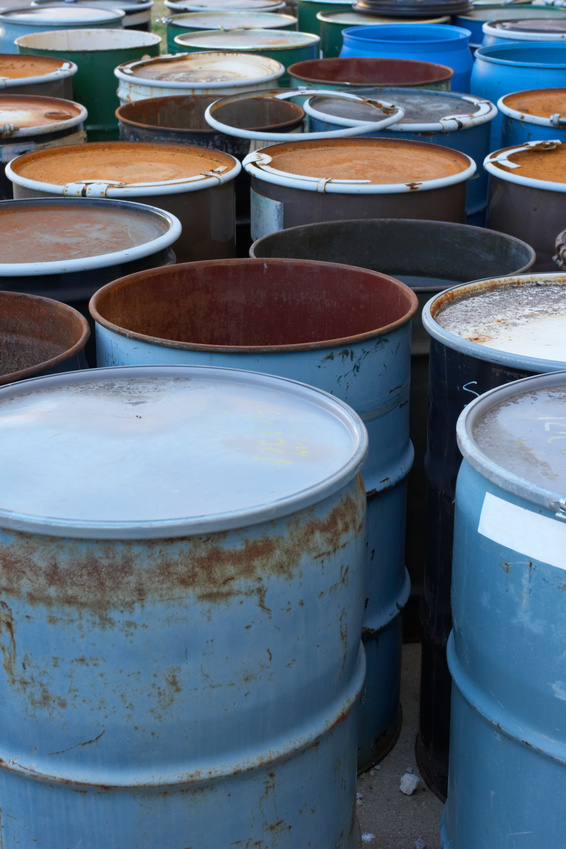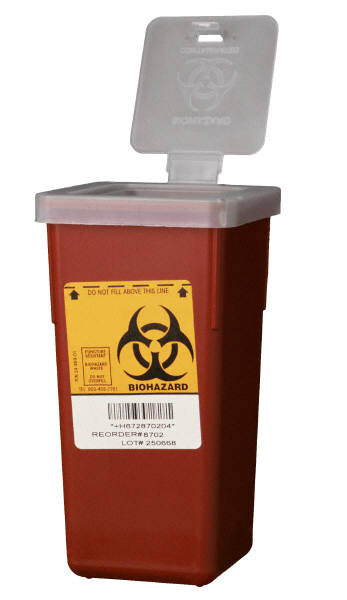July 1 was the deadline for subject facilities to file their annual toxic chemical release inventory (TRI) reports with the US Environmental Protection Agency (EPA) and their state, on one of two EPA-mandated forms, Form R or Form A. These TRI reports are mandated by Section 313 of the Emergency Planning and Community Right-to-Know Act of 1986 (EPCRA), which was adopted as the first Congressional response to the December 1984 toxic gas disaster in Bhopal, India.
Audit, Compliance and Risk Blog
Tags: Corporate Governance, Business & Legal, Health & Safety, Environmental risks, Environmental, EHS, Hazcom
Environmental Compliance: Walmart Pays $110 Million in Fines
Posted by Jon Elliott on Wed, Jun 05, 2013
On May 28 Walmart bundled guilty pleas in a number of pending federal cases alleging environmental compliance violations at some of the company’s 4600+ stores in the U.S. These arose because Walmart had not implemented a corporate hazardous waste management program until January 2006, leaving locations to manage—or mismanage—such wastes.
Tags: Corporate Governance, Business & Legal, California Legislation, Environmental risks, Environmental, EPA, Hazcom
A FIRE CODE PRIMER
Date: Wednesday, May 22, 2013
Time: 2:00 PM - 3:00 PM EDT
Free! All are welcome
Tags: Health & Safety, OSHA, Hazcom, STC, Webinar
Within the U.S., the principal hazardous waste management law is the Resource Conservation and Recovery Act (RCRA) of 1976 (formally codified as Subtitle C of the Solid Waste Disposal Act (SWDA)). The US Environmental Protection Agency (EPA) sets national standards and directly administers RCRA in some states, while state environmental protection agencies administer RCRA and their state acts when authorized by EPA to do so. For domestic activities – including shipments of hazardous waste from a generator to a recycler or treatment, storage and disposal (TSD) facility, that’s enough to know to start compliance.
But if your U.S. organization imports or exports hazardous wastes, you need to know that RCRA incorporates requirements driven by US participation in international treaty - and membership-based organizations. Alternatively, if you’re a non-U.S. reader you may recognize the following elements in your own national requirements.
Exports Consistent with the OECD Agreement
The most relevant international agreement is from the Organization for Economic Cooperation and Development (OECD) – its 1992 “Decision C(92)39/FINAL Concerning the Control of Transfrontier Movements of Wastes Destined for Recovery Operations (OECD Decision)”, as amended. EPA’s RCRA regulations include specific provisions governing “Transboundary Movements of Hazardous Waste for Recovery Within the OECD.” (40 CFR §§ 262.80 – 262.89). As an exception to this coverage, separate rules provide similar requirements for exports to Canada and Mexico (under North American Free Trade Agreement (NAFTA), even though they're also OECD members) (40 CFR §§ 262.80 – 262.89). EPA revises these rules from time to time (most recently in 2010).
The following requirements apply to exports to Canada or Mexico (and to non-OECD countries covered by separate treaties with the U.S.):
(1) The “primary exporter” (typically the generator) provides EPA with a written notification of intent to export, at least 60 days prior to the first shipment. This notification must be in writing, signed by the primary exporter, and include the following information:
-
Name, mailing address, telephone number and EPA ID number of the primary exporter
-
The following information, by consignee, for each hazardous waste type:
- Description of the hazardous waste and the EPA hazardous waste number, U.S. DOT proper shipping name, hazard class and ID number for each hazardous waste
- The estimated frequency or rate at which such waste is to be exported and the period of time over which such waste is to be exported
- The estimated total quantity of the hazardous waste (consistent with Uniform Hazardous Waste Manifest)
- All points of entry to and departure from each foreign country through which the hazardous waste will pass
- Description of mode of transportation (air, highway, rail, water, etc.), and type(s) of container (drums, boxes, tanks, etc.)
- Description of how the hazardous waste will be treated, stored or disposed of in the receiving country (e.g., incineration, land disposal, recycling)
- Name and site address of the consignee and any alternate consignee
- Name of any transit countries through which the hazardous waste will be sent, description of the approximate time it will remain in such country, and the nature of its handling while there.
(2) The receiving country consents to accept the waste.
(3) A copy of an “EPA Acknowledgement of Consent” accompanies the shipment and, unless export takes place by rail, is attached to the manifest.
(4) The shipment conforms to the terms of the receiving country’s written consent.
(5) The shipment complies with RCRA manifest requirements (including the field for international shipments), modified to provide the address of the receiving consignee and alternate instead of facility, and to add the following to the certification of the shipment “and conforms to the terms of the attached EPA Acknowledgment of Consent.”
The primary exporter must notify EPA if the alternate consignee is used. If other problems arise, the primary exporter files an exception report with EPA; this follows requirements for domestic shipments, except that reports are filed with EPA Headquarters. Exporters must file an annual report with EPA summarizing the types, quantities, and destinations of all hazardous waste exported. Records must be retained for at least three years.
Exports to another OECD country instead must meet similar RCRA regulations designed to ensure consistency with OECD requirements. These include incorporation of OECD’s distinction between “Green Wastes” (wastes that present low risk for human health and the environment and, therefore, are not subject to any other controls than those normally applied in commercial transactions) and “Amber Wastes” (wastes presenting sufficient risk to justify their control). These RCRA regulations regulate as hazardous each waste that is a RCRA hazardous waste and/or an Amber waste not otherwise regulated as hazardous, and regulate Green Wastes as non-hazardous. These rules include notifications to EPA and consent by the receiving country similar to those described above, use of a “movement document” analogous to RCRA’s Uniform Hazardous Waste Manifest, and requirements for a contract for transportation and management of the wastes. Exported wastes are to be managed in compliance with the receiving country’s requirements for these activities.
Basel Convention Considerations
In addition to OECD’s provisions, 172 nations and the European Union have ratified the 1989 Basel Convention on the Control of Transboundary Movements of Hazardous Wastes and their Disposal (Basel Convention). OECD revised its Decision in 2001 to align with Basel Convention provisions. President George Bush signed the agreement on behalf of the U.S. in 1989, but the Senate has never ratified it. Absent ratification, the United States cannot participate in waste transfers with Basel Parties without a separate and equivalent bilateral or multilateral agreement. The OECD agreement and NAFTA treaties constitutes such multilateral agreements, and the U.S. also has bilateral agreements with Costa Rica, Malaysia and the Philippines.
Imports of Hazardous Waste
Importers of hazardous wastes must complete manifests for the wastes, substituting their name and facility identifications for the non-domestic generator’s. The importer must provide the transporter with an additional copy to submit to EPA in compliance with the transporter’s manifest requirements. If the import is from an OECD country, the importer must also ensure that the shipment meets OECD requirements.
Implementation Checklist
If your organization is involved in imports and/or exports involving U.S. territory, consider the following checklist. If it is involved in imports or exports involving other OECD countries, the same general issues apply.
Does my organization intend to export hazardous waste, acting as the “primary exporter"?
- If so, is the shipment being sent to:
- Canada or Mexico?
- Another OECD country?
- A non-OECD country?
- Has my organization secured formal consent from the receiving country?
- Has my organization notified EPA of its intent to export?
- Has my organization received EPA’s acknowledgement of the receiving country’s consent?
- Does each shipment comply with domestic U.S. manifest requirements, and applicable requirements of the receiving country?
- Does the organization retain all required records?
- Does my organization intend to import hazardous waste?
- If so, is the shipment being sent from:
- Canada or Mexico?
- Another OECD country?
- A non-OECD country?
- Does each shipment comply with domestic U.S. manifest requirements?
- Does the organization retain all required records?
Where can I go for more information?
-
EPA Hazardous Waste Import/Export webpage www.epa.gov/compliance/monitoring/programs/rcra/importexport.html
-
OECD webpage on transboundary movements of hazardous wastes www.oecd.org/env/waste/theoecdcontrolsystemforwasterecovery.htm
-
Basel Convention www.basel.int
Tags: International, Health & Safety, Environmental risks, Environmental, EPA, Hazcom
Hospital Training Requirements: OSHA Training Regulations Revised
Posted by Viola Funk on Fri, Feb 01, 2013
If you’re responsible for hospital training requirements, and/or have responsibility for planning and carrying out a training program for your staff, you should know that OSHA regulations—such as the Hazard Communication Standard (HCS)—have been revised to conform to the UN’s Globally Harmonized System of Classification and Labelling of Chemicals.
Tags: Corporate Governance, Employer Best Practices, Health & Safety, OSHA, Training, EHS, Hazcom
Hazardous Material Regulations: Don't Forget Your 2012 Hazmat Inventory
Posted by Jon Elliott on Fri, Jan 18, 2013
If your facility handles sufficient quantities of hazardous materials (“hazmat”), then federal laws and regulations—specifically the federal Emergency Planning and Community Right-to-Know Act of 1986 (EPCRA)—requires you to compile and submit an annual inventory of qualifying hazmats to state and local agencies. Although EPCRA allows for abbreviated reporting (“Tier 1”) and full reporting (“Tier 2”), all states presently require Tier 2 reporting. Most agencies require facilities to use EPA’s “Tier 2” reporting forms and/or “Tier2/Submit” software, but some states have promulgated their own variants. Inventory reports are due on March 1 for the preceding calendar year, so January is a great time to confirm that your facility has collected and stored the appropriate data.
Tags: Health & Safety, Environmental risks, Environmental, EHS, EPA, Hazcom
2012 has been a relatively quiet one for environmental health and safety (EH&S) compliance personnel. Fewer new laws are enacted in election years, because some or all of the lawmakers are busy running for election or re-election.
Tags: Health & Safety, OSHA, Environmental risks, Environmental, EHS, EPA, Greenhouse Gas, ghg, Hazcom
Response to Criminal Violations in the Deepwater Horizon Disaster
On November 28, the Environmental Protection Agency (EPA) announced that it was temporarily suspending BP from all new contracts with the U.S. government. EPA acted two weeks after BP agreed to plead guilty to 14 criminal counts, including manslaughter, obstruction of Congress and other criminal charges stemming from the 2012 Deepwater Horizon blowout and oil spill. BP also agreed to pay $4.5 billion in penalties. Federal agencies have authority to issue temporary suspensions and longer-term “debarments” to parties that violate criminal laws (over three thousand were issued in the last fiscal year). EPA is the lead agency doing so for violations of national water and air laws. The effects on BP could be significant: BP is currently the largest lease-holder in deep water portions of the Gulf of Mexico, and in 2011 was the largest supplier of fuels to the U.S. military. Its existing contracts are not affected, but it is ineligible for new ones (for example, the company has already had to skip a round of deep water leasing by the Department of the Interior).
Tags: International, Health & Safety, Environmental risks, Environmental, EPA, Hazcom
The presence of “hazardous” materials in your workplace can trigger a wide variety of environmental health and safety requirements and hazardous waste regulations. The Occupational Safety and Health Administration (OSHA) and state worker protection agencies issue standards to protect workers during occupational handling and storage. The US Environmental Protection Agency (EPA) and state environmental agencies issue requirements governing the management of hazardous wastes, and emissions to a variety of environmental media (air, water and land).
Tags: Employer Best Practices, Health & Safety, OSHA, Employee Rights, Environmental risks, Environmental, EPA, Hazcom
Got Paint? Complying With Hazardous Waste Regulations & Requirements
Posted by Jon Elliott on Fri, Nov 02, 2012
Do you know what happened to any paints, coatings and surface preparation materials left over after the last project at your facility?
Tags: Business & Legal, Audit Standards, Health & Safety, California Legislation, Environmental risks, Environmental, Hazcom










